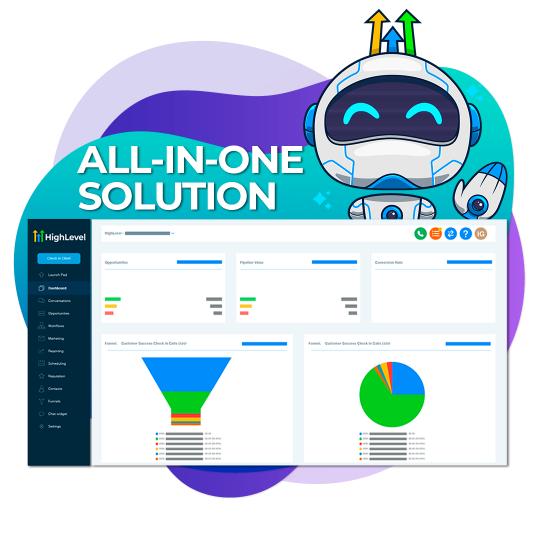Shakespeare Was a Master at Standing Out (Just Like Modern SEO!)
Think of Shakespeare as an early marketing genius. He knew how to make his plays easy to find and remember – just like we do with websites today. He used simple words that anyone could understand. He broke his stories into clear parts. And he kept using phrases people would remember, like "To be or not to be."
When Shakespeare wrote, he thought about what his readers wanted. He made sure his words would stick in their minds. That's exactly what we do now when we write for Google!
Tired of Losing Sales to Competitors Online?
Good news! A Customer Relationship Manager (CRM) helps you track every lead, send follow-ups on time, and never miss a sale. It's like having a super-smart assistant who works 24/7 to keep your business growing.
Try This Top-Rated CRM Free for 14 Days – Limited Time Offer!
Key Takeaways
Shakespeare made stories easy to follow by breaking them into parts, just like websites have clear menus to help you find what you want.
He used the same words and ideas over and over so people would remember them. This is like how websites use special words to help you find them online.
His stories had many parts that connected to each other. When one thing happened, it led to another thing. Websites do this too by linking different pages together.
Shakespeare wrote about things everyone cares about, like love and friendship. Modern websites also talk about topics that many people want to learn about.
He took old stories that people knew and made them new and fresh. Today, writers do the same thing when they make new content from old ideas.
The Art of Natural Language

Words help computers understand what people want. Just like good storytellers share tales with friends, writers today share helpful words online. Simple words make both people and search tools happy.
We write for real people who need answers. Smart computer tools help us share the right words with the right people.
Think of this like building blocks – each part helps tell the story better. When we use clear words and answer real questions, we help people find what they want.
Storytelling Meets Search Engine Optimization
Stories help websites show up in Google. Think of it like making a fun movie that also follows some basic rules.
Good writers know how to tell stories people love. They also know how to add words that help Google find their work. It's like building a house that looks nice and works well too.
Want to make your writing better? Start with these easy steps:
- Break your story into small parts with clear titles
- Write like you talk to a friend
- Link to other stories you wrote
- Get other sites to link to your work
- Check if people read and like your work
Look at what works and what doesn't. Then fix your writing to make it better next time.
Structured Content Like Shakespeare's Plays

Think of Shakespeare's plays like building blocks stacked in a neat way. He knew how to put his stories together so people could follow them easily.
A good website works the same way. When you make a website, you want to help people find what they need fast. Put the important stuff where they can see it.
Use clear titles and sections. Make it simple, just like Shakespeare did with his plays.
Acts and Scenes Strategy
Plays are like a big story broken into smaller parts. Think of a book that has chapters. Shakespeare's plays work the same way.
When you write for the web, you want to make things easy to read. You can split your writing into small chunks. This helps people find what they want fast.
Big ideas go at the top, like the start of a play. Then, smaller ideas come next, like scenes in the play. When you break things up this way, it helps people follow along.
It also helps computers find your writing online. This is like making a map for your readers. They can see where to go next.
Each part leads to the next part, just like in a good story.
Sick of wasting hours on marketing that doesn’t pay off?
What if you could skip the hard work and still grow your business?
Automate your marketing and see how easy it can be to save time and close more deals.
Discover the simplest way to take charge of your business!
Plot Development Flow
A good plot is like building with blocks. You start with your main idea. Then you add more blocks that help tell your story better.
Think of it like making a sandwich. The main idea is your bread. The facts and fun details are what goes inside. You want all the parts to work well together.
Put your most key points where people will see them. Make sure each part leads to the next part. Keep things simple and clear. Write for the people who'll read your work, just like you'd tell a story to a friend.
Remember to:
- Keep ideas simple
- Link each part together
- Use short words
- Make your points clear
- Think about who'll read it
Clear Scene Organization
Content needs good organization, just like a play needs clear scenes. Think of your content like a story broken into parts. Each part connects to the next one, making the whole story make sense.
Big titles help readers know where they are. Small titles show what's next. This is like how actors know when to come on stage and when to leave.
When you sort your writing into clear parts, you help both people and computers find what they need. This is like how scene breaks in a play help people follow the story better.
Long-Form Content and Audience Engagement
Writing long articles is like putting on a play, just like Shakespeare did. Let's look at how he did it and how we can do it too.
First, Shakespeare would tell people what the play was about at the start. You should do this too. Tell your readers what they'll learn right away.
Next, Shakespeare mixed funny parts with serious parts. His plays had both deep talks and silly jokes. When you write, do the same thing. Mix simple words with big ideas. This keeps people reading.
Think of Romeo and Juliet. They speak sweet words to each other. But then their friend Mercutio makes jokes. This is like writing about hard stuff, then giving easy examples that make people smile.
Last, Shakespeare's actors would talk right to the crowd. This made people feel part of the show. When you write, ask your readers questions. Let them leave comments. Share your work on social media. This makes them feel like they're part of your story too.
Voice Search's Historical Roots

Think about how people talk to each other in plays. A long time ago, a writer named Shakespeare wrote down how people really speak.
Today, we can talk to our phones and computers just like we talk to our friends. At first, machines could only hear simple words like numbers.
But now, they can hear and understand whole sentences when we talk to them. Just like in plays, our tech got better at hearing how real people talk.
Theatrical Patterns Meet Search
Voice tech and theater have a cool history. In the 1950s, a machine called "Audrey" was the first that could hear people talk. This was a big first step in how we now use our voice to find things.
Today, theaters make their websites easy to use. People can speak their questions instead of typing them. It's like when you ask a friend about a show – it feels natural.
Just as actors learn new lines, voice tech got better over time. It went from basic sounds to full words.
Now theaters make sure their web pages work well when you speak or type. This helps bring old theater magic into our modern world.
Natural Speech Evolution
Talking to machines has come a long way. Long ago, people made simple tools to copy human speech. In 1774, Von Kempelen built the first speech machine. Many years later, in 1952, Bell Labs made "Audrey" – one of the first machines that could hear words.
Three big steps made talking to machines better:
- In the 1970s, a special team helped make "Harpy." It could understand 1,000 words.
- In the 1980s, smart people found a new way to help machines understand us better.
- In the 2010s, machines got better at learning how each person talks.
Now, more than 4 billion people use machines that can listen and talk back. This shows that the old writer Shakespeare was right – talking in a natural way is how we want to use our tools.
Semantic Context Through Literary Mastery
Shakespeare was really good at using words in new ways. He borrowed words from other languages like Latin to make English richer. He made up new words like "multitudinous" that we still use today.
Think of it like building blocks. Shakespeare took words and:
- Mixed them in new ways
- Put them in special spots
- Made them mean new things
In his famous poems, like Sonnet 130, he used simple words like "wire" and "rare" but gave them fresh meanings.
The way he used words was smart and clear. His tricks with words still help us understand language better today.
Simple Chart:
- Old words → New uses
- Clear writing → Better stories
- Smart wordplay → Happy readers
- Changed meanings → New ideas
Deep Linking Before Digital Times

Shakespeare was really good at connecting different parts of his stories.
Like a spider making a web, he linked characters and their stories together. When people in his plays talk about other scenes or people, it helps us remember the whole story better.
Think of it like building blocks – each block helps make the full picture stronger.
Shakespeare knew that when stories connect to each other, they become more fun to watch and easier to understand.
Internal Knowledge Networks
Knowledge sharing has been around for a long time. Even before computers, people found ways to share what they knew. A great example is William Shakespeare and his plays.
Shakespeare was smart about learning from others. He watched other plays and talked to other writers. Then he used what he learned to make his own plays better.
Here's what Shakespeare did:
- He took old ideas and mixed them up in new ways
- He made his characters talk to the crowd in new and deep ways
- He worked with other writers and actors to learn new tricks
Today, we share knowledge using computers and websites. But the idea is the same as what Shakespeare did – we learn from each other to make new things.
Layered Content Structure
Plays are like early websites! They show us how to share stories in smart ways. Think of how a play breaks into parts – just like a website breaks into pages.
Let's look at how old plays and new websites are alike:
| Play Parts | Website Parts |
|---|---|
| Acts | Main Topics |
| Scenes | Smaller Topics |
| New Characters | New Ideas |
| Notes About Moving | Help Finding Things |
| Talking Parts | Words That Flow |
When you watch a play, you follow the story from big parts to small parts. Website readers do the same thing! They want to find what they need fast and easy.
This way of telling stories has worked since Shakespeare's time. It worked then in his theater, and it works now on the web. When things are in order, stories make more sense.
Cross-References Create Authority
People have been connecting ideas long before computers. Shakespeare showed us how to do this well in his plays and poems.
He linked things in three simple ways:
- He used old stories and myths that people knew.
- His characters said things that tied to other parts of the story.
- He used the same pictures and ideas over and over to make them stick.
Just like websites today link to other websites, Shakespeare linked his ideas to make them easy to remember. When people saw these links, they felt smart and liked his stories more.
Think of it like a big puzzle. Each piece fits with other pieces. When you see how they all connect, the whole story makes more sense.
Shakespeare did this on purpose to help people understand his stories better.
Universal Appeal Drives Traffic
People love stories that speak to their hearts. Just like Shakespeare wrote about love and power that everyone could feel, good online writing needs to touch on things we all care about.
Big ideas that matter to everyone get more readers than small, quick trends. When you write about feelings and hopes we all share, more people will find and read your work. Think about what connects all of us – like love, fear, or hope.
The best writing is clear and simple. It talks about things that never get old. When you mix these big ideas with the right words people search for, more readers will find your work.
And they'll keep coming back to read more.
Keywords and Literary Devices

Words matter a lot – just like they did long ago. Think of Shakespeare. He knew how to get people to listen by using special words over and over. Today, we do the same thing when we write for websites.
Here are some old tricks that still work:
- Say important words many times – like how Shakespeare used "blood" lots of times in his play Macbeth.
- Link your writing to other stories people know.
- Give each piece of writing its own special voice.
Shakespeare was really good at using words in smart ways. He knew how to make people want to keep reading. We try to do that same thing when we write for the internet today.
The old ways of using words still help us connect with readers. Whether it's a play from 400 years ago or a website today, good writing makes people want to read more.
Content Organization Through Time
Content planning hasn't changed much over time. Think of Shakespeare, the famous writer from long ago. He wrote plays that flow just like good web pages do today.
Both start with something that makes you want to keep reading. They tell stories step by step. They make sure each part fits with the next part.
When Shakespeare wrote big speeches, he'd a clear way to share his ideas. He'd tell you what he thought, show you why, and wrap it up neatly. This is just like how people write for the web now.
Shakespeare also linked different parts of his stories together. He made sure one scene helped you understand the next one. Writers today do the same thing when they add links to their web pages.
Conclusion
Shakespeare did SEO before computers were even a thing! Think about it – he knew how to get people's attention just like we do today with Google. While most websites now have about 1,890 words on a page, Shakespeare wrote way more – his plays had 22,500 words! He wrote in a way that was easy to understand and remember. He broke his stories into clear parts, like acts and scenes. And he made sure everyone could enjoy his work, from rich people to poor people. Without knowing it, he created the same rules we use today to help people find things online.
Tired of Losing Track of Your Leads and Sales?
Stop letting potential customers slip away. A CRM system helps you track every lead, automate follow-ups, and close more deals. It's like having a smart assistant who never sleeps, making sure you never miss an opportunity to grow your business.








